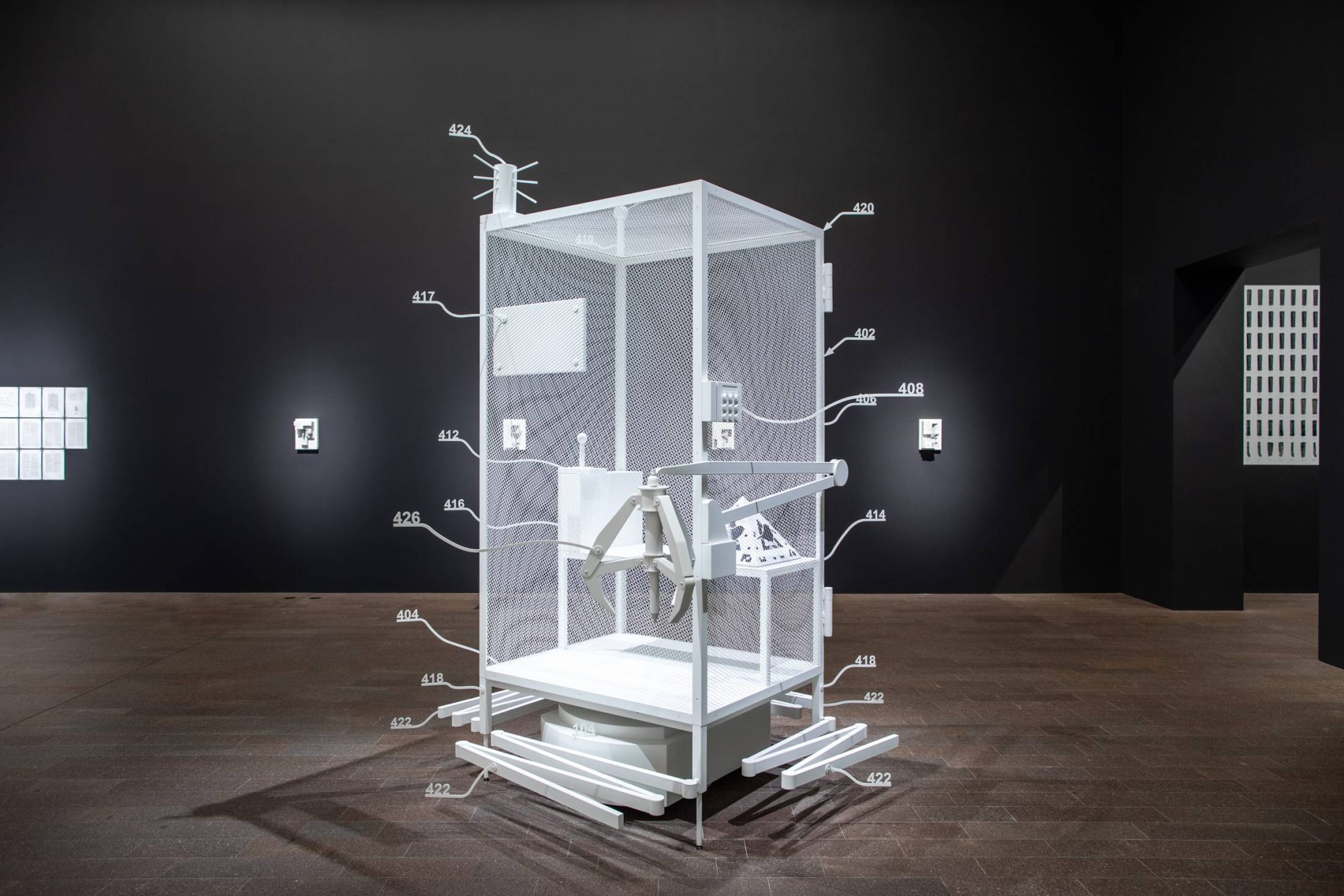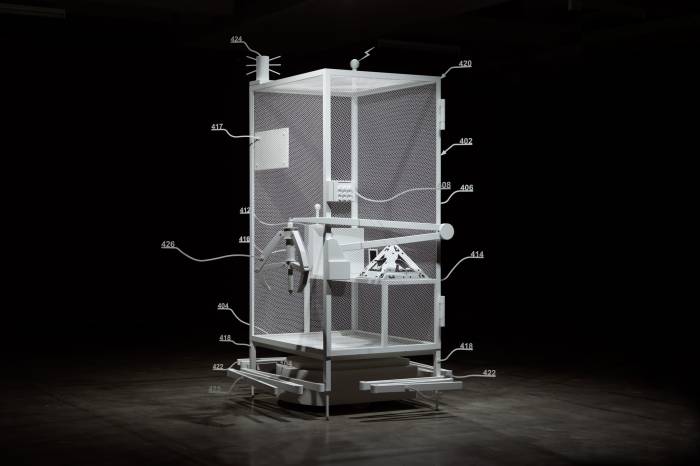Uncanny Valley: Being Human in the Age of Ai; 2020.
Photo by Gary Sexton.
Courtesy of the artist and Petzel Gallery, New York.
Uncanny Valley: Being Human in the Age of Ai; 2020.
Photo by Gary Sexton.
Courtesy of the artist and Petzel Gallery, New York.
Uncanny Valley: Being Human in the Age of Ai; 2020.
Photo by Gary Sexton.
Courtesy of the artist and Petzel Gallery, New York.
Uncanny Valley: Being Human in the Age of Ai; 2020.
Photo by Gary Sexton.
Courtesy of the artist and Petzel Gallery, New York.
de Young Museum, San Francisco, 2020:
In today’s AI-driven world, increasingly organized and shaped by algorithms that track, collect, and evaluate our data, the question of what it means to be human has shifted. Uncanny Valley is the first major exhibition to unpack this question through a lens of contemporary art and propose new ways of thinking about intelligence, nature, and artifice.
With nearby Silicon Valley driving the development of artificial intelligence, or AI, Uncanny Valley: Being Human in the Age of AI arrives as the first major West Coast museum exhibition to thicken the discourse around AI through a lens of artistic practice. Rather than trafficking in speculative fantasies, the exhibition looks at current applications of AI to redefine the coordinates of the uncanny valley. It builds on contemporary metaphors from the technological imagination—the digital alter ego, the model of swarm intelligence, the data-mining algorithm—to propose a new visual vocabulary for describing the relationship between humans and machines.
Several works in the exhibition concern forms of collective intelligence—in both nature and culture—that inform or define the design and mechanisms of AI. Ian Cheng’s BOB (Bag of Beliefs) (2018–2019) translates this idea into a virtual life-form in the shape of a snake that responds to both its internal programming and to input from its audience. Agnieska Kurant’s works in this exhibition incorporate crowdsourced information and labor that together point to the new economy of “ghost work” fueling many AI platforms and devices.
Simon Denny’s sculpture and relief works critique the humanitarian and ecological costs of today’s data economy, particularly the destructive environmental practices used to create sleek AI-based objects like Amazon’s Echo. The Zairja Collective’s intricate collages also concern mining—both of physical resources and of data. Overlaying images of firing neurons with open-pit designs sourced




